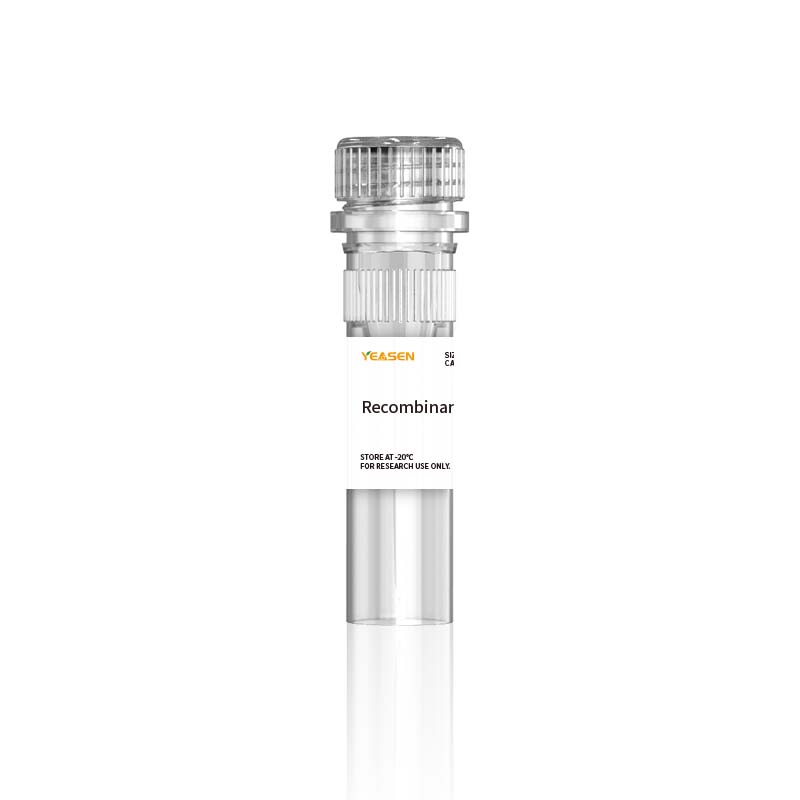Description
CD4, also known as L3T4, T4, and W3/25, is an approximately 55 kDa type I transmembrane glycoprotein that is expressed predominantly on thymocytes and a subset of mature T lymphocytes. It is a standard phenotype marker for the identification of T cell populations. Mature human CD4 consists of a 371 aa extracellular region containing four immunoglobulin-like domains, a 22 aa transmembrane segment, and a 40 aa cytoplasmic domain. Within the ECD, human CD4 shares approximately 52% aa sequence identity with mouse and rat CD4. CD4 is expressed along with CD8 on double positive T cells during their development in the thymus. Either CD4 or CD8 expression is then lost, giving rise to single positive (SP) CD4+ or CD8+ mature T cells. CD4+ SP cells, also known as T helper cells, further differentiate into multiple subsets of CD4+ cells including Th1, Th2, Th17, Tfh, and Treg cells which regulate humoral and cellular immunity. CD4 is reexpressed on circulating CD8+ T cells upon activation and contributes to their cytotoxic effector activity. In human, CD4 is additionally expressed on macrophages, neutrophils, monocytes, NK cells, and neurons and glial cells in the brain. Similar CD4 distribution between species cannot be assumed as demonstrated by its presence on macrophages in human and rat but not in mouse. CD4 binds directly to MHC class II molecules on antigen presenting cells. This interaction contributes to the formation of the immunological synapse which is focused around the TCR-MHC class II-antigenic peptide interaction.
Specifications
|
Synonyms |
CD4 antigen (p55); CD4 molecule; CD4 receptor; CD4; CD4mut; EU3 |
|
Uniprot No. |
|
|
Source |
Recombinant Human CD4/LEU3 Protein is expressed from HEK293 Cells with hFc at the C-terminal. It contains Lys26-Trp390. |
|
Molecular Weight |
The protein has a predicted MW of 67.5 kDa. Due to glycosylation, the protein migrates to 70-80 kDa based on Tris-Bis PAGE result. |
|
Physical Appearance |
Sterile Filtered White lyophilized (freeze-dried) powder. |
|
Purity |
> 95% as determined by SDS-PAGE and HPLC |
|
Activity |
ELISA Data:Immobilized Human CD4 at 0.5μg/ml (100μl/Well) on the plate. Dose response curve for Biotinylated Anti-CD4 Antibody, hFc Tag with the EC50 of 20.9ng/ml determined by ELISA. |
|
Endotoxin |
< 1.0 EU per 1μg of the protein by the LAL method. |
|
Formulation |
Lyophilized from 0.22 μm filtered solution in PBS (pH 7.4). Normally 5% trehalose is added as protectant before lyophilization. |
|
Reconstitution |
Centrifuge tubes before opening. Reconstituting to a concentration more than 100 μg/mL is recommended (usually we use 1 mg/mL solution for lyophilization). Dissolve the lyophilized protein in distilled water. |
Storage
The product should be stored at -20~-80℃ for 1 year from date of receipt.
2-7 days, 2 ~8 °C under sterile conditions after reconstitution.
3-6 months, -20~-80℃ under sterile conditions after reconstitution.
Recommend to aliquot the protein into smaller quantities when first used and avoid repeated freeze-thaw cycles.
Note
1. Avoid repeated freezing and thawing.
2. Please operate with lab coats and disposable gloves, for your safety.
3. This product is for research use only.
Product Data
Tris-Bis PAGE

HB220624
Payment & Security
Your payment information is processed securely. We do not store credit card details nor have access to your credit card information.
Inquiry
You may also like
FAQ
The product is for research purposes only and is not intended for therapeutic or diagnostic use in humans or animals. Products and content are protected by patents, trademarks, and copyrights owned by Yeasen Biotechnology. Trademark symbols indicate the country of origin, not necessarily registration in all regions.
Certain applications may require additional third-party intellectual property rights.
Yeasen is dedicated to ethical science, believing our research should address critical questions while ensuring safety and ethical standards.

